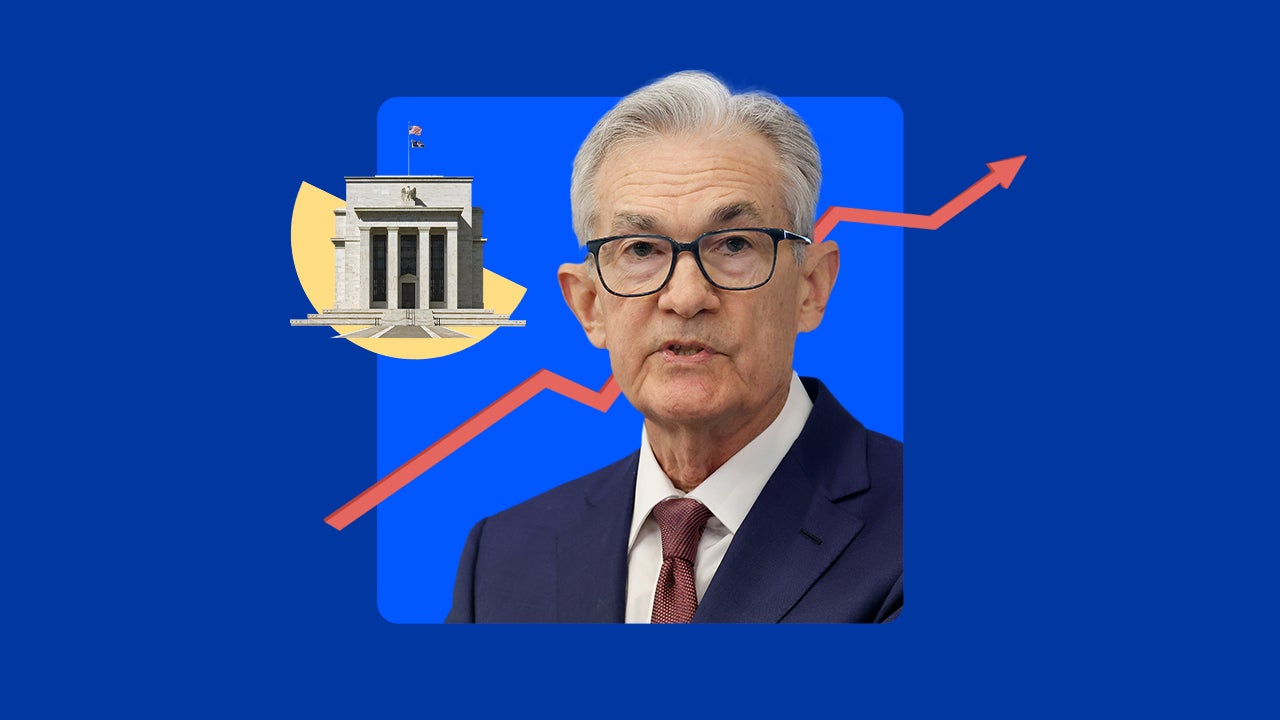How the Federal Reserve impacts savings account interest rates

When the Federal Reserve changes interest rates, consumers feel the ripple effects in all sorts of ways. For savers, banks offering top interest rates tend to pay more when the U.S. central bank hikes rates and less when it cuts them.
“Seeking out the top-yielding savings accounts will continue to be the difference between staying ahead of inflation or falling behind as many banks — and especially large banks — never passed along much in the way of higher rates to savers,” says Greg McBride, CFA, Bankrate chief financial analyst.
For anyone hoping to make saving money a top priority, here’s what to consider when the Fed makes a change to the federal funds rate.
The loose link between Fed rate hikes and your high-yield savings account
Congress mandates the Fed maintain economic and financial stability. The central bank mostly does so by raising or lowering the cost of borrowing money. Savings account rates are loosely linked to the rates the Fed sets.
The Federal Reserve adjusts the federal funds rate based on broader economic conditions such as inflation, employment levels, and overall economic growth. This rate represents what banks charge each other for overnight loans to meet reserve requirements.
Banks use the federal funds rate as a benchmark for various financial products, including both loans and deposit accounts. Changes in this rate affect banks’ cost of borrowing and, consequently, their overall funding costs.
After the central bank raises its key interest rate, financial institutions tend to pay more interest on high-yield savings accounts to stay competitive and attract deposits. Conversely, after the Fed lowers its rate, banks tend to lower their deposit account rates.
Why some banks offer higher rates than others
The savings account market shows significant variation in interest rates, often with a difference of several percentage points between different banks. This disparity in rates reflects fundamental differences in how various financial institutions operate and compete for deposits.
Online banks tend to compete for customers with comparatively high rates, while brick-and-mortar banks tend to avoid paying savers competitive yields. The rates on savings accounts vary drastically, and they can change at any time.
Deposits, in general, are essential to banks’ business models: They are used as a low-cost funding source to fuel loan demand.
“Bankers don’t get deposits just because it’s cool to have deposits,” says Neil Stanley, CEO and founder of The CorePoint, a bank management services company. “They get them because they can invest them in loans.”
Several key factors influence why banks offer different rates:
- Operating costs: Online banks operate with lower overhead costs since they don’t maintain physical branches or large staff numbers. These cost savings often translate into higher rates for depositors. Traditional banks, with their extensive branch networks and larger workforces, have higher operating costs that can limit their ability to offer competitive rates.
- Deposit needs: Banks use deposits as a source of funds for loans, and when they have a greater need for deposits to support lending, they’re more likely to offer higher rates. This is particularly true for growing banks or those expanding their lending operations.
- Competitive strategy: Some banks compete primarily on rates to attract new customers, while others focus on service, convenience, or relationship banking. Online banks often use high rates as their main competitive advantage, while traditional banks may emphasize their branch network, personal service, or product options.
How to maximize your savings rate
“Although the primary benefit of emergency savings is the immediate access to cash that shields you from high-cost debt or forced asset sales when unplanned expenses arise, yields on online savings accounts are still paying returns exceeding inflation, so your emergency fund isn’t a drag on your portfolio,” says Bankrate’s McBride.
Regardless of what the Fed is doing, you can take several steps to ensure you’re earning the best possible return on your savings:
1. Compare rates regularly
Online banks are known for offering the highest yields, but it pays to shop around.
As you compare rates, consider different accounts such as high-yield savings accounts, money market accounts, and certificates of deposit (CDs). Look out for promotional rates and special offers, which can provide temporary rate boosts, but make sure to note when these promotional periods end.
2. Understand account features
A high interest rate isn’t the only factor to consider when choosing a savings account. Take time to review the minimum balance requirements, as some high-yield accounts require a high deposit to earn the advertised rate. Also review any monthly maintenance fees that could eat into your earnings, and know what you need to do to avoid them.
Consider the account’s accessibility, including ATM access and mobile banking capabilities, to make sure the account fits your banking habits. Pay special attention to any restrictions, such as monthly withdrawal limits or requirements for maintaining the advertised rate.
3. Consider multiple account types
Different savings accounts can serve different purposes in your financial plan.
- High-yield savings accounts work well for emergency funds and short-term savings goals because they offer easy access to your money while earning competitive rates.
- Money market accounts often provide higher rates for larger balances and may include check-writing privileges.
- Certificates of deposit can offer premium rates if you’re willing to lock your money away for a set period, making them best for longer-term savings goals.
- Cash management accounts might provide additional features like investment options or enhanced FDIC insurance through multiple bank partnerships.
Bottom line
While Federal Reserve decisions can influence savings account rates, the impact varies significantly between banks and credit unions. By understanding this relationship and actively managing your savings strategy, you can maximize your returns regardless of the current rate environment.






